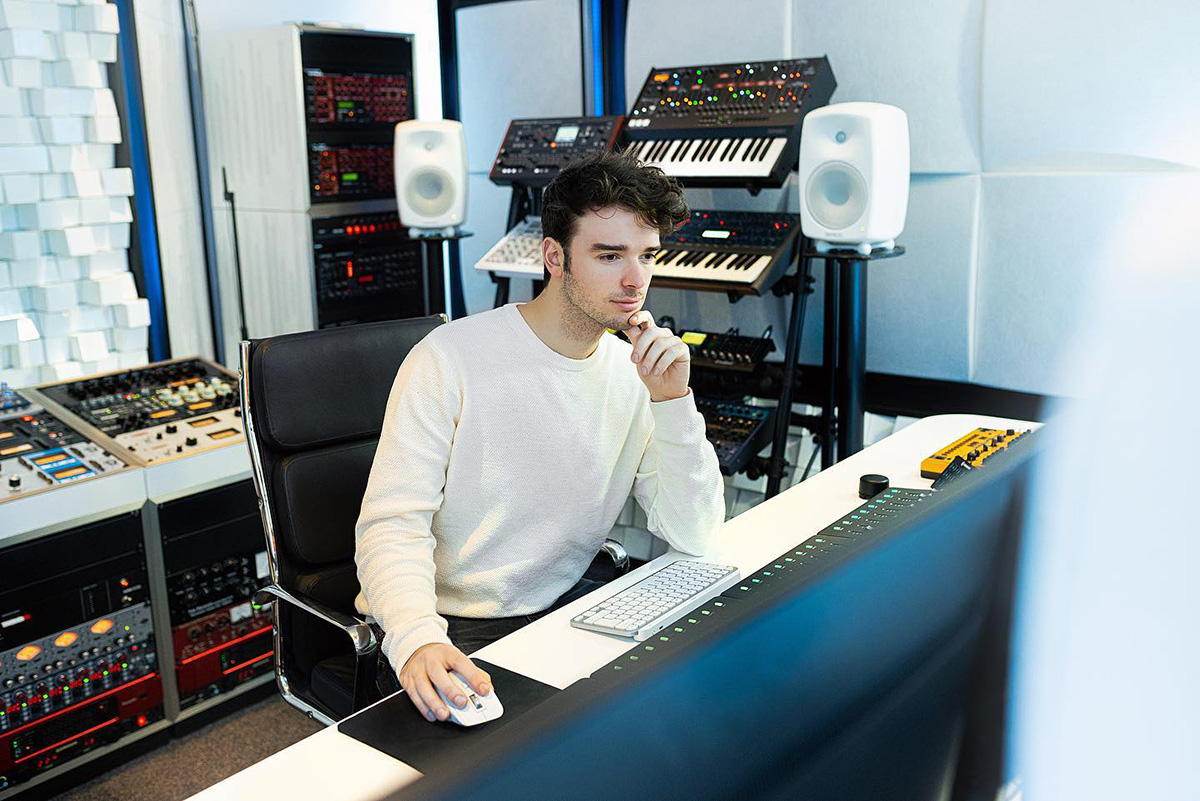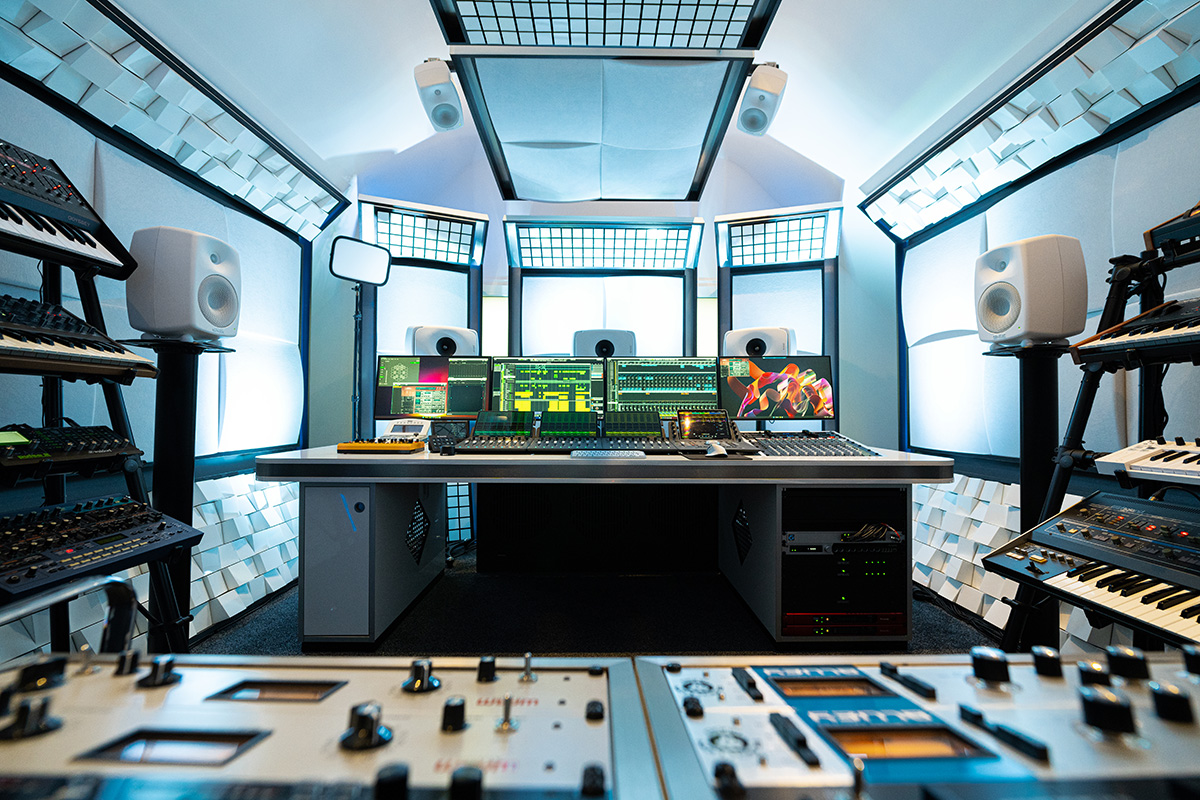Immersive Talk with Spatial Moon Studios
Can you tell our readers a little about yourself?
Most people know me as the artist NIVIRO, yet many won't know that since the end of 2022, I've had Spatial Moon Studios, my very own commercial mixing and production facility. For as long as I can remember, I’ve been passionate about music and how it’s created. It all started when I was messing around with the equaliser on my parents’ stereo system – the perfect introduction to balancing sound!

Can you tell us more about your studio space?
My studio's built in an attic space. I built it in collaboration with legendary studio designer Jan Morel. We started by making a twenty square metre control room to achieve the perfect acoustical environment for production, mixing and mastering services, using an aesthetically futuristic look. Many feel it looks like a spaceship's cockpit. Next to the control room, we built a two-and-a-half square metre isolation booth to capture vocals and small instruments in a sonically dry condition. Finally, I have a fifty square metre recording room with plenty of space. In there, I can record anything from tiny setups right up to full-size bands – in the highest fidelity, and with great acoustic control. With a natural yet short reverberation time, it lends an organic sound to recordings.
What are your key pieces of equipment?
The studio's been set up to make every room interconnectable over a ten-gigabit network, with the brains all located in a dedicated server room below – for minimal noise bleed. The driving force behind the studio is a custom-built, water-cooled Windows 11 computer, including the latest Intel i9-13900k and 64 GB of DDR5 RAM, and running Nuendo 12. To offload VST processing, I use a secondary computer running AudioGridder software with an AMD Threadripper 3975WX and 128 GB of DDR4 RAM. As an interface, I’m currently using an RME HDSPe FX MADI card linked to three DirectOut ExBoxMD MADI to Dante converters, providing me with 96 Dante streams, in and out, at 96 kHz.
At the time of writing, I’m thinking of upgrading to a DAD Core 256 with a DAD MOM, expanding the studio to 128-bit, 96 kHz bidirectional Dante streams and comprehensive universal monitor control. The studio itself is powered by both analogue and digital (AES) Focusrite RedNet converters, which offer impeccable sound quality over a modular Dante system.

What type of work do you do in your studio?
I provide professional recording, mixing and mastering with a focus on immersive audio in various formats. Additionally, the studio provides immersive mixing for films and commercials. Besides that, I use the studio for my own musical projects. I particularly work in the Auro3D format developed by the Belgian pioneer Wilfried Van Baelen. Since there's also great interest in other formats like Dolby Atmos, DTS:X and Sony360, the studio can also deliver these.
How and when did you become interested in immersive audio?
My first encounter with immersive audio was back in 2017, when I was visiting Wilfried Van Baelen’s renowned Galaxy Studios, located in the same town as me. I had a demo on a Genelec system there, and from the first listen Auro3D blew me away. It felt extremely natural, yet enormously powerful. From that moment, I knew immersive would become a big thing in cinema and the consumer market – for both audio and video. Working with stereo audio had always felt like – no matter how much effort one puts in – ultimately, it's enclosed in a box and cannot escape. I decided to future-proof my whole studio with a 7.1.4 configuration. That tends to work well with most immersive formats. After that, I could happily experiment with the various formats and possibilities.

Can you tell us more about your Genelec monitoring system?
For me, it was a no-brainer to go with Genelec. Before the immersive upgrade, my studio was equipped with two Genelec 8050A monitors and a 7073A subwoofer connected to a Dangerous Music Monitor ST monitor controller. That system already felt rich and dynamic, but I decided to install a full Genelec Smart Active Monitoring system powered by GLM. So, I got three 8351B monitors for left, centre and right, and then four 8340As for the surrounds and four 8330As for the top layer. For the sub, I went with a 7382A, as the studio is mainly used for EDM, which generally has a high level of bass. Additionally, one more 8340A is used on the LFE channel to quality-check the LFE content for the final master export.
Everything is connected via AES on a RedNet D16R over two Genelec 9301A interfaces, giving full control over Bass Management. In most immersive mixes, the high energy elements come from the front channels, so I opted for the larger 8351 'The Ones' to guarantee enough headroom. After firing up the 8351Bs, I was blown away by their clarity and directional accuracy; such a natural representation of sound, where the slightest details and nuances can be heard.
What are your thoughts about GLM?
My analogue system based on 8050s already gave an amazing sound image, yet GLM offered many more possibilities for fine-tuning. When I first turned on my new immersive system with GLM calibration enabled and played a stereo track to compare to my old system, it felt like a completely new listening experience. I perceived the lows lower, mids cutting through the mix and the highs crystal-clear. It’s a solid portrayal of how the audio is intended to be by the artist and engineer; a sound you can rely on!

To find out more about the Spatial Moon Studios, click here.
Do you want to be featured in our ‘Immersive Talk’ series? If so, just post some pictures of your setup on Instagram using the #GenelecImmersive hashtag. We’ll be keeping a look out for the most interesting setups, so who knows? We may be in touch with you!





